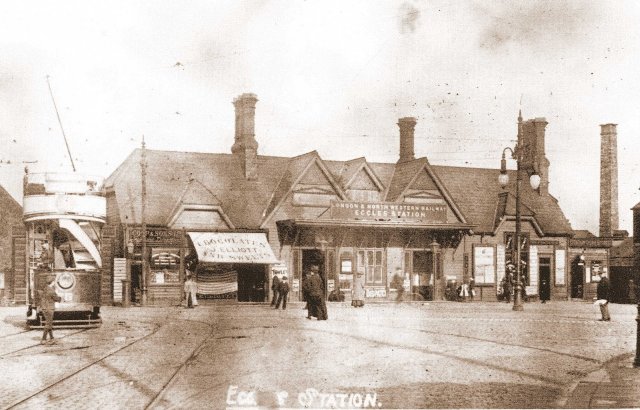
In this series, we’ll be taking a look at the history surrounding Salford’s past and present railway stations and their impact on Greater Manchester, the North-West, and the United Kingdom. From Salford Priors to the ongoing regeneration of Salford Central, this series will explore the untold history around our railways, and recognise the significance they hold in Salford life.
Tucked away between the bustle of the M602, and the winding Vicarage Grove sits the tranquil platforms of Eccles Train Station. Adorned with blooming flower bunches and colourful creations by local children, Eccles Station provides a hidden haven of rich history.
After officials decided to create a railway from Liverpool to Manchester in 1830 for commercial reasons, the route Eccles Station sits on was opened on 15th September that year.
Primarily created for commercial reasons, the route also provided attractive journey times between the two cities, much shorter times than that of canal or road. The railway became the first inter-city railway in the world.
Mark Charnley of the Friends of Eccles Train Station (FRECCLES) group, explained the importance of the station: “This was the first inter-city, fully locomotive operated, two track railway in the world. It became the template for railways everywhere and was the start of the expansion of railways nationally and worldwide.
“Its historically important, but also locally its not as busy as some of the stations in Manchester, but its busy for a small town station. There’s quite a lot of people who commute on the train, its a very well connected area.
“This meant Eccles was connected to the two major industrial and commercial cities of the northwest, and eventually the rest of the country. The railways were much faster and could carry more than the roads or canals of the day.
“There was an increase in industry in the area, although this was more around the Patricroft area of Eccles Borough. Indeed, before the railway it was quite a rural area.”
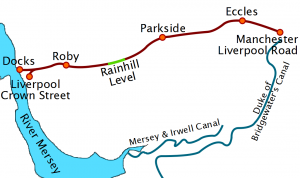
Of course, one of the Liverpool to Manchester Railway opening’s most prolific incidents was the death of British MP, William Huskisson. After an unfortunate series of events left him dangling from a train door, directly in the path of an oncoming train, the wounded MP was taken to Eccles vicarage where he later died of his injuries.
Despite safety fears of the railway, the urbanisation of Eccles grew and more people flocked to the area. Subsequently, complaints arose regarding train overcrowding and station safety. By 1876, the Eccles and Patricoft Journal reported that the rail company was to quadruple the station in size and resit the station.
The Journal stated: “The new station will be one of the finest on the line; not surpassed by any suburban railway in the district. Four platforms will be connected by a covered walkway and the roofs covered with glass. The office of the station master, Mr Hallsworth, will be adjacent to the booking office at the main entrance on Eccles Bridge. Extending on each side will be the waiting and refreshment rooms.”
Eccles Train Station building itself wasn’t actually created until 1881, with passengers using handkerchiefs and umbrellas to hail incoming trains from the platform.
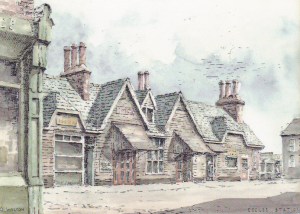
The station became a hub for commuting workers, especially during wartime periods. During the thick of World War II, Eccles Station experienced one of its deadliest disasters in history, in the 1941 rail crash. After a concoction of thick fog, wartime ‘blackouts’ and extreme staffing miscalculations, the 06:53 Rochdale to Pennington collided broadside with a Kenyon to Manchester train, just outside the station.
The crash killed 23 people, and injured a further 105. Among those were Monton’s Jack Cresswell and Oswald Charles, and 21-year-old twins, Irene and Vera Davies, who were set to be bridesmaids at their Sister’s wedding on New Year’s Day.
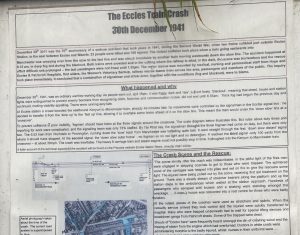
“William Smith, of Mayfield Road, Eccles… who escaped with a slightly-injured shoulder, paid tribute to the rescuers. “I had only just got sat down” he said”when I noticed that the door to the compartment had not been closed properly. I got up and eased it open in order to bang it to but as soon as I opened it the train shuddered and I was flung out onto the signal wires running alongside the line. Steam was hissing and people were shouting ‘Get me out'”
An excerpt from the Eccles and Patricoft Journal
Mark Charnley said: “The 1941 crash probably had more impact locally as people of the town were involved. Although it was kept relatively quiet nationally due to war time reporting restrictions aimed at maintaining moral.”
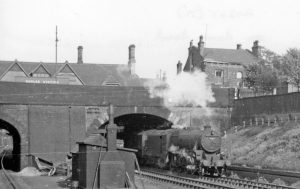
In 1971, Eccles Station building was set fire to, and subsequently burnt down. A temporary port-a-cabin was installed and it wasn’t until 2013 that Northern, Network Rail and TFGM rebuilt the ticketing office.
Mark Charnley continued: “We would never have the resources to rebuild the ticketing office. The temporary cabin of 40 years was basically a cabin, with a fella sat in. Whatever the weather was, you’d be affected. Now there’s a little area you can sit in and for half a dozen people. It’s a bit better than what it was.
“We have some information about the FRECCLES group inside the office, so it becomes a nice community area.”
Only 43 years later, in 1984, Eccles Station fell witness to another train crash, after the 10:04 Liverpool to Scarborough service ploughed into the back of a freight train carrying central heating gas in Weaste. Three people were killed and 68 were left injured. It took over 200 firemen and over 50 ambulances carried victims to local hospitals throughout Greater Manchester.
The cause of the crash was determined to be that the driver of the express train had passed a signal at danger.
Mark Charnley followed: “The 1984 crash train did not stop at Eccles and so local people were not really involved, apart from rescue services and Hope Hospital. Whereas the 1941 crash was not majorly reported nationwide as mentioned above, the 1984 crash certainly was.”
175 years on since the opening of Eccles Station, the FRECCLES community group was established (15th September 2005). Aiming to “improve the environment and passenger services at Eccles Station and… put the station back into the heart of the community”, the FRECCLES group now holds over a dozen members.
Mark Charnley, who worked in the railway service for over 34 years, explained the importance the group holds to him. He said: “I was a rail enthusiast before I worked on the trains, so it was almost like a bus man’s holiday. I’ve retired from railway now, but FRECCLES keeps us involved with the railway operator, and keeps us involved with local people.
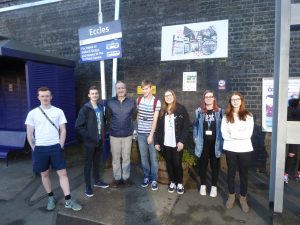
“We worked with local colleges, and have artwork on the station from them. We work with local schools and give them an idea of the rich history we have in the local area.
“We have always tried to involve community in our work at the station. What better way than to involve local schools and colleges – giving the children an insight into the history of the railway, especially the importance of our local railway to the world.
“The children are the future travellers and commuters, and our projects may open their eyes to the possibility of travel. Also, in these days where climate change is a major issue, the railway is considered a greener way to travel. There are so many places you can visit.”

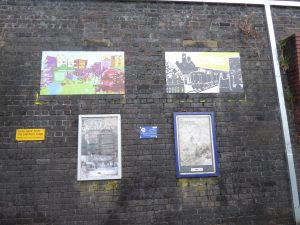
Eccles Train Station holds significant value, not only in its geographical proximity to cities such as Manchester and Liverpool, but its rich history as a landmark in the first inter-city railway in the world. As place of historical tragedies, a community cornerstone, or even just a spot to sit and wait for the 14:15 service into town, Eccles Station is a tucked-away treasure for train and local history enthusiasts alike.















Recent Comments